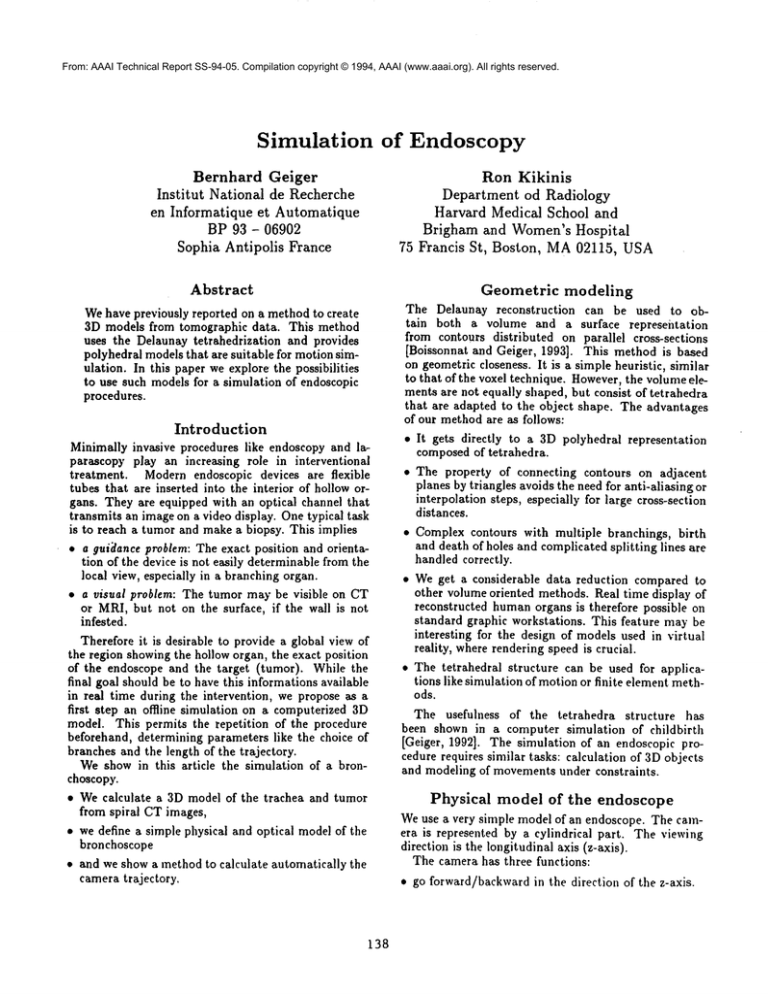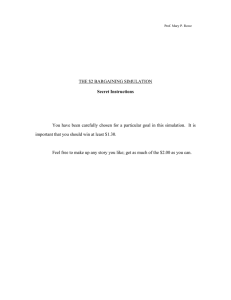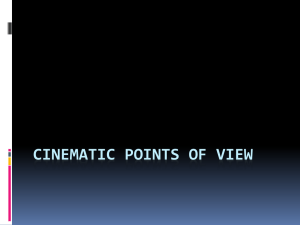
From: AAAI Technical Report SS-94-05. Compilation copyright © 1994, AAAI (www.aaai.org). All rights reserved.
Simulation
of Endoscopy
Bernhard Geiger
Institut National de Recherche
en Informatique et Automatique
BP 93 - 06902
Sophia Antipolis France
Ron Kikinis
Department od Radiology
HarvardMedical School and
Brigham and Women’sHospital
75 Francis St, Boston, MA02115, USA
Abstract
Geometric
Wehave previously reported on a method to create
3D models from tomographic data. This method
uses the Delaunay tetrahedrization
and provides
polyhedral models that are suitable for motion simulation. In this paper we explore the possibilities
to use such models for a simulation of endoscopic
procedures.
Introduction
Minimally invasive procedures like endoscopy and laparascopy play an increasing role in interventional
treatment. Modern endoscopic devices are flexible
tubes that are inserted into the interior of hollow organs. They are equipped with an optical channel that
transmits an image on a video display. One typical task
is to reach a tumor and make a biopsy. This implies
¯ a gui’dance problem: The exact position and orientation of the device is not easily determinable from the
local view, especially in a branching organ.
¯ a visual problem: The tumor may be visible on CT
or MRI, but not on the surface, if the wall is not
infested.
Therefore it is desirable to provide a global view of
the region showingthe hollow organ, the exact position
of the endoscope and the target (tumor). While the
final goal should be to have this informations available
in real time during the intervention, we propose as a
first step an offline simulation on a computerized 3D
model. This permits the repetition of the procedure
beforehand, determining parameters like the choice of
branches and the length of the trajectory.
Weshow in this article the simulation of a bronchoscopy.
¯ Wecalculate a 3D model of the trachea and tumor
from spiral CT images,
¯ we define a simple physical and optical model of the
bronchoscope
¯ and we show a method to calculate automatically the
camera trajectory.
138
modeling
The Delaunay reconstruction
can be used to obtain both a volume and a surface representation
from contours distributed on parallel cross-sections
[Boissonnat and Geiger, 1993]. This method is based
on geometric closeness. It is a simple heuristic, similar
to that of the voxel technique. However,the volumeelements are not equally shaped, but consist of tetrahedra
that are adapted to the object shape. The advantages
of our method are as follows:
¯ It gets directly to a 3D polyhedral representation
composed of tetrahedra.
¯ The property of connecting contours on adjacent
planes by triangles avoids the need for anti-aliasing or
interpolation steps, especially for large cross-section
distances.
¯ Complex contours with multiple branchings, birth
and death of holes and complicated splitting lines are
handled correctly.
¯ Weget a considerable data reduction compared to
other volume oriented methods. Real time display of
reconstructed human organs is therefore possible on
standard graphic workstations. This feature may be
interesting for the design of models used in virtual
reality, where rendering speed is crucial.
¯ The tetrahedral structure can be used for applications like simulation of motion or finite element methods.
The usefulness of the tetrahedra
structure
has
been shown in a computer simulation of childbirth
[Geiger, 1992]. The simulation of an endoscopic procedure requires similar tasks: calculation of 3D objects
and modeling of movements under constraints.
Physical
model of the endoscope
Weuse a very simple model of an endoscope. The camera is represented by a cylindrical part. The viewing
direction is the longitudinal axis (z-axis).
The camera has three functions:
¯ go forward/backward in the direction of the z-axis.
¯ turn around its z-axis by -180--180 deg
¯ pivot around the x-axis by -90--90 deg
If the camerahits the wall, we calculate the force and
momentand produce then small corrective motions to
reduce the forces to zero. The allowed motions are rotations around the x- and y-axis and translations orthogonal to the z-axis of the camera. Due to the geometry
of the camera, it usually turns its z-axis parallel to the
conduit.
Trajectory
calculation
Besides the possibility to reach a target by using the
above functions repeatedly, we provide also a method
to calculate a trajectory automatically. The user can
specify the target point interactively. Wecan rapidly
find the tetrahedron C containing the current camera
position and the tetrahedron T containing the target
point. Then we search for a set of tetrahedra S connected face to face and linking C with T. We then
connect C with T by a straight line segment s, and verify that it lies completely inside the trachea tetrahedra.
If not, we choose M a tetrahedron from the middle
of S and replace s by two segments s, connecting C
and M and s2 connecting M and T. This procedure
is repeated recursively until all segments are inside the
trachea. Whenthe camera finally follows this trajectory, we detect an eventual penetration of the wall and
modify the trajectory.
Experimental
Results
Weimplemented this system on a Silicon Graphics
workstation (Personal Iris) using the SGI graphics library gl. In one window,we show the global scene, and
~ne windowdisplays the.camera view. GI provides the
possibility of defining a local view point and a local light
source with linear light attenuation. Advancedlighting
.~eatures like spotlights and square distance attenuation
~s well as texture mapping were not available on our
workstation.
The model of the trachea was obtained from a series
~f 32 axial CTimages (spiral CTacquisition). The ratio
~f in-slice resolution to slice-to-slice resolution was1:3.
[n order to get a realistic impressioninside the trachea it
¯ a~ necessary to smooth the contours and to interpolate
ntermediate cross-sections.
The number of triangles and tetrahedra was respectively 4500 and 19000. The time for calculating the
:ontact between surface and camera was clearly infe:ior to the display time. On our antiquated SGI with
~n 1%3000processor chip we obtained a rate of about
me frame per second. Figure 1 and 2 show a typical
~cene.
this first model should be improved by
mapping texture onto the walls
using advanced lighting models
b addind gravitational forces to the camera model
139
An important task would be to calculate the observed
surface in order to verify the complete inspection of the
walls.
References
[Boissonnat and Geiger, 1993] J-D. Boissonnat and
B. Geiger. Three dimensionMreconstruction of complex shapes based on the Delaunay triangulation. In
R. S. Acharya and D. B. Goldgof, editors, Biomedical Image Processing and Biomedical Visualization,
pages 964-975, San Jose CA, February 1993. SPIE.
vol. 1905, part 2.
[Geiger, 1992] B. Geiger. Three dimensional simulation
of delivery for cephalopelvic disproportion. In First
international workshop on mechatronics in medicine
and surgery, pages 146-152, Costa del Sol, October
1992.
\
1
I
i
/!
-.,._
\
¯
....i-~,.:!-.
~........
.....
~.-...i.i.:.: . i::::".i..
\
!
\
Figure 1 A view into the trachea. Theglobal scene showsthe position of the cameraanda part of a tumor.
Figure2 A view of the tumor(textured regionin the local view).
140


